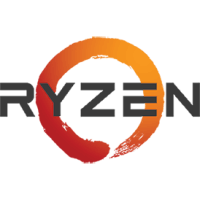
The processor AMD Ryzen 3 PRO 4350GE is developed on the 7 nm technology node and architecture Renoir (Zen 2). Its base clock speed is 3.50 GHz, and maximum clock speed in turbo boost - 3.80 GHz. AMD Ryzen 3 PRO 4350GE contains 4 processing cores. To make a right choice for computer upgrading, please get familiar with the detailed technical specifications and benchmark results. Check socket compatibility before choosing.
 CPU Cores and Base Frequency CPU Cores and Base Frequency |
||||
|---|---|---|---|---|
| Frequency | 3.50 GHz | Cores | 4 | |
| Turbo (1 Core) | 4.00 GHz | CPU Threads | 8 | |
| Turbo (All Cores) | 3.80 GHz | |||
| Hyperthreading ? | Yes | Overclocking ? | Yes | |
| Core architecture | normal | |||
 Internal Graphics Internal Graphics |
|
|---|---|
| GPU name | AMD Radeon 6 Graphics (Renoir) |
| GPU frequency | 1.70 GHz |
| GPU (Turbo) | No turbo |
| Generation | |
| DirectX Version | 12 |
| Execution units | 6 |
| Shader | 384 |
| Max. Memory | 2 GB |
| Max. displays | 3 |
| Technology | 7 nm |
| Release date | Q1/2020 |
 Hardware codec support Hardware codec support
|
|
|---|---|
| H264 | Decode / Encode |
| H265 / HEVC (8 bit) | Decode / Encode |
| H265 / HEVC (10 bit) | Decode / Encode |
| VP8 | Decode / Encode |
| VP9 | Decode / Encode |
| AV1 | No |
| AV1 | No |
| AVC | Decode / Encode |
| JPEG | Decode / Encode |
 Memory & PCIe Memory & PCIe
| ||||
|---|---|---|---|---|
| Memory type | DDR4-3200 | |||
| Max. Memory | 64 GB | |||
| Memory channels | 2 | ECC | Yes | |
| PCIe version | 3.0 | PCIe lanes | 12 | |
 Thermal Management Thermal Management
| ||||
|---|---|---|---|---|
| TDP (PL1) | 35 W | TDP (PL2) | ||
| TDP up | -- | TDP down | -- | |
| Tjunction max | 100 °C | |||
 Technical details Technical details
| |
|---|---|
| Instruction set (ISA) | x86-64 (64 bit) |
| Architecture | Renoir (Zen 2) |
| L2-Cache | -- |
| L3-Cache | 8.00 MB |
| Technology | 7 nm |
| Virtualization | AMD-V, SVM |
| Release date | Q3/2020 |
| Socket | AM4 (LGA 1331) |
Cinebench R23 is the successor of Cinebench R20 and is also based on the Cinema 4 Suite. Cinema 4 is a worldwide used software to create 3D forms. The single-core test only uses one CPU core, the amount of cores or hyperthreading ability doesn't count.
Cinebench R23 is the successor of Cinebench R20 and is also based on the Cinema 4 Suite. Cinema 4 is a worldwide used software to create 3D forms. The multi-core test involves all CPU cores and taks a big advantage of hyperthreading.
Cinebench R20 is the successor of Cinebench R15 and is also based on the Cinema 4 Suite. Cinema 4 is a worldwide used software to create 3D forms. The single-core test only uses one CPU core, the amount of cores or hyperthreading ability doesn't count.
The theoretical computing performance of the internal graphics unit of the processor with simple accuracy (32 bit) in GFLOPS. GFLOPS indicates how many billion floating point operations the iGPU can perform per second.
Cinebench R15 is the successor of Cinebench 11.5 and is also based on the Cinema 4 Suite. Cinema 4 is a worldwide used software to create 3D forms. The single-core test only uses one CPU core, the amount of cores or hyperthreading ability doesn't count.